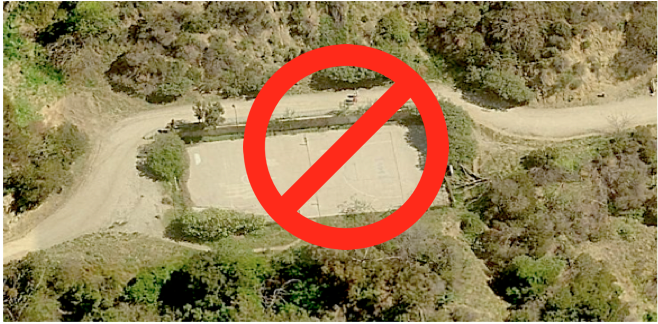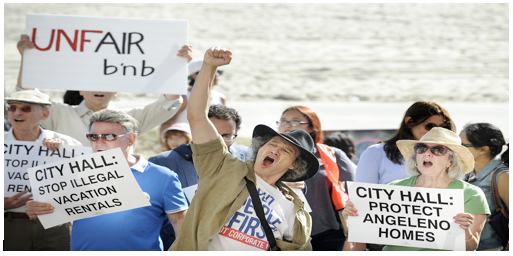Mexican Puppy Mills Filling the Gap Created by the LA ‘Puppy-Mill’ Ban … There’s a Better Solution
ANIMAL WATCH-On April 20, 2016, the 2013 “Puppy Mill Ban” that prohibits the sale of any puppies, kittens or rabbits from retail stores in Los Angeles, other than shelter or rescue animals, became permanent, with the removal of the sunset clause.
With the customary puffery and halo-polishing that surrounds passage of any animal law, Councilman Paul Koretz assured the media that puppy mills were being impacted by the trend-setting “new business model” operating successfully in the City and offering only shelter animals for adoption, although his PAW Committee report lacked documentation other than the Best Friends’ heavily subsidized NKLA (No-Kill L.A.) adoption center.
Is Koretz factoring in the ongoing $15, $25 and “No Adoption Fees” events such as the “Black Friday Weekend Special” at the NKLA Adoption Center, which are an important aspect in making this “new business model” viable?
Is he considering the $300,000 Best Friends paid last year alone to encourage its NKLA partners to remove more animals from city shelters, according to L.A. Executive Director Mark Peralta, during his October 2015 report at the LAAS Commission meeting?
Koretz failed to cite any statistics on the number of adopters who were converted from buying a pet store puppy to adopting an adult mixed-breed shelter dog or whether any adopters were even asked this question.
He did not identify any independent former or new pet shops that are thriving under his law, which was also expanded to allow dog kennels, called “pet shops” with unlimited shelter animals to be maintained in any C-2 location in the city without a Conditional Use Permit.
Has Koretz even considered other sources that might now be providing purebred puppies or is he naïve enough to believe the potential closure of only eleven (mostly small) pet shops that sold live animals in Los Angeles changed the mindset of purchasers who want a purebred animal?
It was not long before the same activists who protested in front of Los Angeles pet stores and promoted the original ordinance (CF 11-0754) in 2013 appeared at LA Animal Services Commission meetings to demand that the Internet be regulated, and lamented (as predicted by opponents of the ban) that market-savvy puppy mills were offering to ship adorable puppies of any breed directly to buyers in LA. Imagine that!
Ironically, on April 20, the same day Paul Koretz and the LA City Council were basking in their humaneness, Los Angeles media ran the news that 23 puppies and young dogs being smuggled into the U.S. from Mexico at San Diego were intercepted by Border Patrol.
Daniel Canedo, the driver of the sweltering SUV in which the dogs spent 5-1/2 hours with no water in covered crates, said he was bringing them to Los Angeles.
All the puppies were unconscious and two appeared to be dead, according to reports. But, soon fresh air and cool water provided by San Diego Animal Services brought some of their limp bodies to recovery. Others required more extensive veterinary care to survive.
In a posted YouTube video, these do not appear to be animals taken from the streets. Most were estimated at only six to eight weeks of age. Many of them shared a similar appearance -- enough that they could have been from the same litter -- or the same puppy mill.
Although ignored by Los Angeles officials when passing the puppy ban in pet shops, the Mexican puppy-mill pipeline, which purveys especially small-breed animals to be sold in parking lots or any public location in Los Angeles (for cash), is not new and is reportedly growing.
There’s an established nexus between the upsurge in Mexican puppy mills and historical efforts to shame pet stores that sell Midwestern puppies, rather than enforcing the California state laws that strictly regulate the conditions and care of animals in pet stores.
As early as 2004, LA Times reporter Richard Manosi wrote that untold misery was resulting to animals and unsuspecting purchasers as an explosion of puppy mills in Mexico rushed to fill the gap caused by pressures on American consumers not to buy purebred puppies from pet shops selling puppy-mill puppies from the Midwest, according to Mexican Puppy Mills Breed Grief to Southland (LA Times, June 26, 2004.)
In October 2010, the National Geographic republished a report on the growing problem, entitled, Sick Puppies Smuggled From Mexico for Sale in U.S., in which animal agencies and federal Border Control inspectors worked together to compile a statistical estimate of the extent of puppy-mill smuggling operations.
During the two-week operation in 2006 the officers found 362 puppies being brought across the border that looked less than three months old, the investigation found. Ill animals were seized by local animal control agencies and later adopted. However, the healthy ones were left with the smugglers because it is not illegal to bring dogs into the U.S. from Mexico.
Federal law requires that any imported puppies be isolated until they are old enough to be vaccinated for rabies (formerly four months, but California law was changed in 2013, lowering the age to three months.) Puppy peddling of these smuggled animals can generate profits of more than $10,000 a month, animal control officials said.
You would think the news of the April 20 smuggling incident would bring cries of alarm and outrage from Los Angeles animal-welfare groups, such as Best Friends, and legislators (especially Councilman Koretz.) Mr. Canedo was merely charged with 23 counts of misdemeanor animal cruelty and issued a citation.
Could their lack of concern over the future of LA’s underground puppy market be influenced by the fact that Best Friends has announced that at the end of 2016 it is moving on from Los Angeles and will not seek renewal of its rent-free lease of the Northeast Valley Mission Shelter?
What impact will this have on the shelters from which it reports having taken over 17,000 dogs and cats from 2013 through 2015 (2015 figures projected), according to their September 8, 2015 report?
Perhaps Councilman Koretz wasn’t told by Best Friends or Jim Bickhart, former Mayor Villaraigosa’s aide and Koretz’ current political advisor, that this “new business-model” pet shop is not really new, although both were aware. It has already failed twice in LA.
The following is excerpted from a media release posted in its entirety by Rabbit Advocacy. It was issued on March 16, 2009, by Lisa Dulyea, Best Friends staff, announcing, “Grand Opening of Woof Worx features animal shelter rescued pups.”
“Best Friends Los Angeles Programs (BFLA) hosted an event March 13 to celebrate the grand opening of the first rescued pets store resulting from A Puppy-Store-Free LA.”
It explains, “Best Friends has been hard at work to find an alternative, and collaborated with Woof Worx (formerly Pets of Bel Air) on the idea to sell wonderful, healthy, purebred puppies that come from local shelters. For a mere fraction of what it would cost at a traditional pet store, people can adopt one (or more) of these dogs, support a business that’s doing the right thing, and save a life.”
A later paragraph reads, “We are so thrilled to be partnering with Jamie Katz, the owner of this beautiful store, and to support her in her efforts,” says Elizabeth Oreck, BFLA manager. “We truly believe that traditional pet stores that sell dogs from puppy mills will soon be a thing of the past, and that a store like Woof Worx will become a national model for cities all across the country.“
There is no exact date when Woof Worx closed, but it was after raving reviews by celebrities at the opening and sometime before any Yelp review was posted.
Just before that, at the January 26, 2009 LAAS Commission meeting, then-General Manager Ed Boks took a more cautious approach and received approval of a Letter of Agreement with “The Puppy Store” on Melrose Blvd. to create an “experimental, short-term pilot program [February 1 through September 1, 2009] to determine the feasibility of working with private pet stores to adopt animals for resale.”
Boks’ report explained, “…if The Puppy Store can successfully execute and sustain a high-end pet store and achieve a reasonable financial return by selling only pets from shelters and rescues, it may become the model for other pet stores to follow.”
There’s no specific date that shows when The Puppy Store closed, but a call to it a few months later revealed that the number was disconnected.
Along with the “puppy mill” ban, Councilman Paul Koretz destroyed the ability of Los Angeles to regulate the very animals it claims to protect, and which are now part of an underground and Internet market that escapes monitoring or regulation.
The State of California enacted the Polanco-Lockyer-Farr Animal Protection Act to assure the humane treatment of any animal in a pet store and assure that purchasers knew the origin of the animal and were informed about spay/neuter.
The legislative code is HEALTH AND SAFETY CODE SECTION 122125-122220.
Here’s just one section:
Every pet dealer shall deliver to the purchaser of each dog or cat at the time of sale, written material, in a form determined by the pet dealer, containing information on the benefits of spaying and neutering. The written material shall include recommendations on establishing a relationship with a veterinarian, information on early-age spaying and neutering, the health benefits associated with
spaying and neutering pets, the importance of minimizing the risk of homeless or unwanted animals, and the need to comply with applicable license laws.
We can read this and weep over what Los Angeles has lost and the suffering to animals and pet owners that is already resulting.
Wouldn’t animals and their new owners have been far better represented if Councilman Koretz had demanded that Los Angeles Animal Services strictly enforce all laws available to protect them in City-permitted pet stores and, for those that violated these provisions, assure fines were levied and/or revocation of their permit to do business was publicized?
That could have started an on-going conversation with the public, with parents and with children -- who often are the reason a pet is sought -- about the benefits of adopting a shelter animal that needs a home.
Instead, we have condemned even the compliant pet stores who provided what our State laws required, and who might have been convinced to obtain their purebred pets locally, and be governed under the State’s Polanco-Lockyer Pet Breeder Warranty Act.
Instead, Koretz made local businesses the “bad guy” while opening the door for puppy mills that we cannot control.
(Animal activist Phyllis M. Daugherty writes for CityWatch and is a contributing writer to opposingviews.com. She lives in Los Angeles.) Prepped for CityWatch by Linda Abrams.


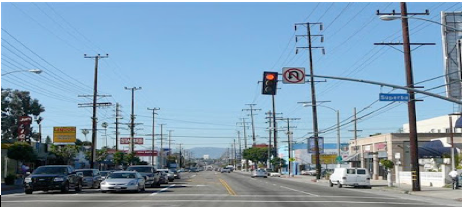






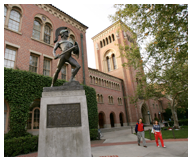 It’s time for the University to turn this image around, and prove to the community — including the homeless — that it is also part of our Trojan Family.
It’s time for the University to turn this image around, and prove to the community — including the homeless — that it is also part of our Trojan Family. 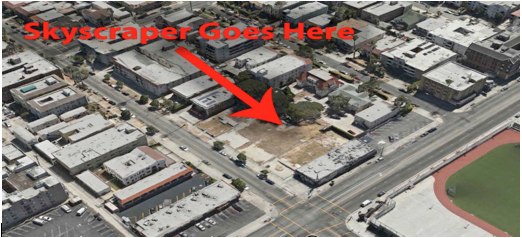


 I have done this with the Red and Purple Lines. I’ve spoken with riders on the Expo Line who took the Blue Line because they couldn’t separate blue from aqua.
I have done this with the Red and Purple Lines. I’ve spoken with riders on the Expo Line who took the Blue Line because they couldn’t separate blue from aqua. 





